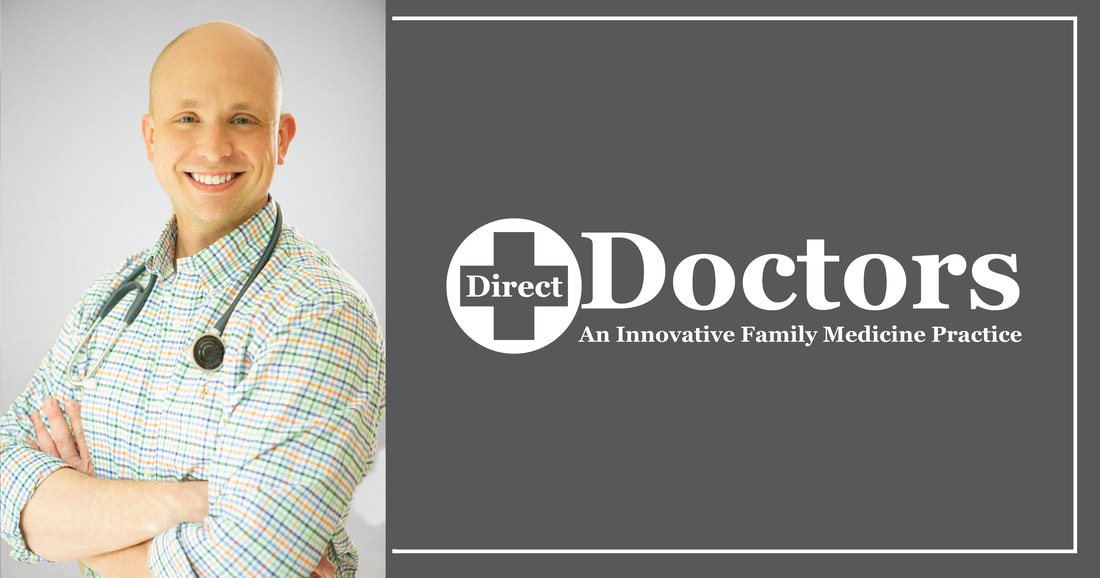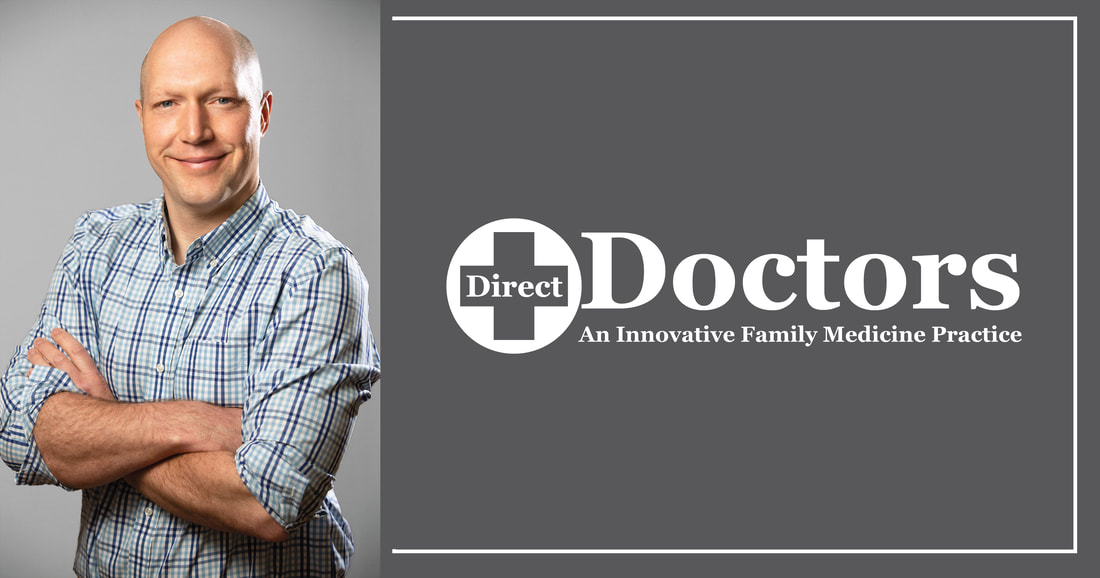|
Direct Doctors will be celebrating our 7 year anniversary this August! Over that time, we’ve come to really appreciate the direct primary care model that we are using to deliver efficient, evidence based and personal care to our almost 1,000 patients. Like many of the other DPC practices across the country, we’ve noticed many benefits (for both the patient and physician), while also discovering a few barriers.
The two most common types of health insurances that we see today (outside of medicare and medicaid) are called PPOs and HMOs.
The majority of our blogs focus on the healthcare system in general, and how direct primary care can help fill in some of the gaps. Currently, I’d like to highlight some concerns with a more local healthcare issue that has been in the news lately. If you haven’t heard, the long anticipated merger between Lifespan and Care New England has been announced. This deal also involves Brown University who only noted the positive aspects of such a merger in their press release. The Providence Journal conversely, ran a much more balanced assessment article . Every time large health organizations merge or consolidate, the purported benefits are advertised far and wide: continuity of care will improve, costs will go down, quality of care will go up and the health ecosystem will dramatically change. In this case, we are told that all of Rhode Island will be better off with the two largest healthcare organizations combining powers to produce a health care utopia.... except all the data we have to date shows the exact opposite. We have mountains of evidence that whenever this happens, costs go up! When there is a monopoly on services and reduced choice for consumers, patients (or their insurers which eventually trickles down) end up getting charged more for the same services. There is evidence that the same thing happens when physician practices merge or get bought by larger organizations. You want more data? Here’s an article from 2018 showing that though hospital operating costs are reduced 15-30% by this kind of merger, costs still go up! And how about that “increase in patient care” that is touted. Here’s an article from Harvard just last year that indicates that hospital performance does not improve and patient satisfaction actually goes down. Interestingly, we do know that one of the only things that does decrease health care costs is access to good primary care. Neither Lifespan nor CNE have ever prioritized primary care, which is consistent among most large health care providers. What is the incentive for large hospitals to have great primary care that keeps patients away from their biggest revenue generators? Care New England allowed Memorial Hospital to close, displacing the main Family Medicine Residency in the state, which disproportionately affected the large minority population in the Pawtucket/Central Falls area (despite everyone's calls to improve health disparities). Brown Medical School, like many large academic institutions, loves to highlight their students who go into flashy specialties as opposed to holding those who love primary care in similar esteem. So those who are interested in primary care medicine are really exposed only to corporate medicine, PCMH and the types of practices we think need to be changed in the first place. Rhode Island, as a whole, already has a primary care shortage due to many factors which drives more patients to urgent care and ER facilities subsequently driving up costs for everyone. To combat this, these large organizations are turning more to mid-level providers (PAs and NPs) in their primary care setting. These providers historically order more tests, refer more to specialists, etc… which, you guessed it, also drive up costs. To assist with all of this “continuity,” these large organizations turn to bloated, insanely expensive, electronic medical record and billing software. Then to make up for these costs, primary care doctors are forced to see more patients, leaving little time for good medicine or pension for over prescribing, ordering and referring (as we’ve mentioned in the past) We do understand that there can certainly be an increase in academic research and improved specialty consultation within these institutions, so it’s not all bad. But in the end, the combination of poor primary care, hospital monopolies and the introduction of more HMO plans into the mix are setting our Rhode Island health care system up for increasing costs, decreasing patient choice without any change in outcomes or patient satisfaction. At Direct Doctors, we will continue to do our part in assisting patients with quality primary care access, lowering their medical costs and improving their overall care! During the COVID pandemic, as many insurances started to see the necessity of telemedicine (i.e. video and telephone calls in place of in-person visits), many types of “healthcare providers” and services jumped to the forefront for these types of visits. Services like Teladoc, having been around a long time, started getting more notoriety for the virtual service they offer. It’s important to understand the differences between telehealth and virtual services and telemedicine appointments with your own doctor.
We often hear from patients interested in Direct Primary Care practices, like Direct Doctors, that they “have regular insurance, so why do I need this too?” We’ve reviewed the “why” in many prior blogs, but here is the “how” it works.
Over 95% of our patients have insurance. They still use it. If they have specialists to see, colonoscopies to undergo, meds to fill, or labs to get - they still use their insurance. Direct Doctors can send the order to the lab, refill your prescription at the pharmacy, or refer you to your chosen specialist (we don’t have to stick in the networks like some corporate PCPs) all through your insurance. This all feels just exactly like you’re used to with a fee for service PCP office. Your average physician’s office cannot accommodate the needs of the 2000+ patients that they have per doctor in the normal day. If the doctor is full or not in the office that day, they will often either recommend that you come in and see a non-physician practitioner or go to the local urgent care where you can walk-in anytime you need it.
At Direct Primary Care practices, like Direct Doctors, we do our best to be available to you when you need it. While we can’t guarantee 24/7 in-person access, we can be sure to get back to you when you have an urgent need. Our patients text, email and call us when they have an urgent concern and they hear back from their doctor directly within hours (and usually within minutes!). When scheduling allows and the need requires an in-person assessment or treatment, their doctor directly schedules them to come in for what they need. We’ve done a few blogs about health care pricing (medications, office/ER visits, etc). Another big health care cost hurdle that patients deal with quite often is the cost of labs or blood work. If you’re a patient with typical insurance, have you ever received a bill from a lab for several hundred dollars for “routine blood work?” You probably assumed insurance would “cover” everything because you pay for an expensive health insurance plan. Or maybe you’re a patient without insurance or a high deductible plan that has to pay for many costs before insurance even kicks in. Have you ever wondered why labs cost so much? Or why the typical primary care practice you were going to didn’t warn you about the costs or ask your financial situation to be sure you could pay for such costs? Most likely, the pricing you received on your bill didn’t look like this:
Every year we release a blog about the open enrollment season and things folks should think about when purchasing health insurance. Most of the information is consistent this year, though I’ve updated things a bit below:
Whether you purchase your insurance through the state, government, employer or directly from the vendors, this can be a daunting process. There are often many choices, with slight differences that are difficult to decipher. Beyond that, because price transparency is such an issue in healthcare, it is often hard to plan or budget for future costs when there is no way to find out how much these services actually cost! Below, I’ve tried to outline a couple tips while going through this process. Over the past few years, we’ve highlighted the savings of over $3000 in 2 years that the Smith family was able to keep on hand because of being members of our DPC practice at Direct Doctors. In 2016, we highlighted the following cost savings on medications: Since then, we’ve continued to share our wholesale medication pricing with our patients. Some of the most common medication savings we pass on to patients are:
Because in RI doctors are able to wholesale order medications for their patients when clinically appropriate, we can cut out the pharmacy/insurance middle men and offer direct pricing to our patients at cost. This reflects a savings to patients, especially on chronic medications, that is not found in the typical primary care practice. These are just examples but we are always happy to help interested patients compare pricing to see if the addition of medication-cost-savings may tip the scale in favor of a DPC membership. Check us out at www.directdoctors.org for more info! In past years we have visited the Smith Family, a typical working family of three looking to reduce their healthcare expenses through a membership with our Direct Primary Care practice, Direct Doctors. We looked at how they were able to save $1350 during their first year as members of Direct Doctors just by switching to a higher-deductible, lower-premium health insurance and joining the practice for their primary care.
We eliminated costs for their family by helping them keep their care in the primary care office setting. We decreased (in fact, eliminated) their need for specialist visits and handled their urgent issues in our office or via text/email/cell phone when necessary. In their second year as patients, they found additional savings benefits through reduced medication co-pays and laboratory co-pays. This is no mystery - labs and meds cost more when you use third parties. |
AuthorLauren Hedde, DO; James Hedde, DO and Mark Turshen, MD are Family Physicians and Co- Founders of Direct Doctors, Inc. a Direct Primary Care Practice. Archives
December 2023
Categories |




 RSS Feed
RSS Feed